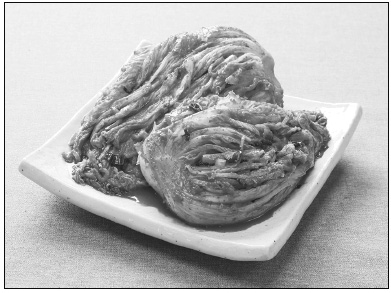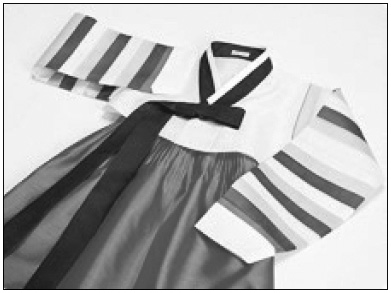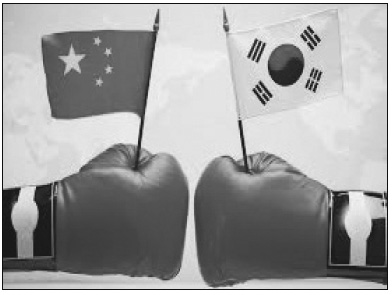Recently, a SBS drama “Joseon – Gumasa” was banned after just two episodes due to a controversy over the distortion of history. The background of the drama is the ‘Tae-jong’ era of the Joseon dynasty. It was criticized that it could be used as the basis for supporting China’s northeastern process due to various historical distortions portrayed in the drama, such as the appearance of Chinese food at old Korean restaurants. Moreover, China’s culture process has recently intensified in Korea, and the drama, which is the leading actor of the Korean Wave culture, was criticized for yielding to ‘China Money.’ In response, CBT reporters covered the current status of the cultural processes that China is employing to distort history.
Korean traditional culture under attack from the Chinese cultural processes.
1. Kimchi
In February, when people searched ‘the origin of Kimchi’ on google, the result came back as ‘China.’ This provoked strong protest from Korean netizens, and the information was changed to ‘Korea.’ Also, a website ‘Baidu Wiki’ an internet encyclopedia in China, ascribed the origin of Kimchi to China and introduced it as a subculture of Chinese food ‘Paochai.’
While it is difficult to trace the history of Kimchi, it can be shown that fermented foods similar to Kimchi are recorded in the ‘Samgook-sagi’, the books that record the history of three countries before the Goryeo dynasty. In addition, the direct etymology is ‘Chimchae’, which links the specific records of Kimchi to the Joseon dynasty. Also, in the late Joseon dynasty, Chinese cabbage was distributed in Korea, indicating that the culture of Kimchi was more developed. In 1849, ‘Dongguk-Sesigi’, the book which is written by Hong Seok-mo, says “In October and November making Kimchi with radish, cabbage, garlic, red pepper, and salt is an important plan of the year.”
2. Hanbok
Last November, ‘Shining Nicky’, a mobile game released by a Chinese company, included a new item namely a Hanbok, to commemorate the release of the game in Korea. Hanbok, as many people may well know, is Korean traditional clothing, but some Chinese netizens protested that Hanbok originated from China’s traditional clothing ‘Hanfu’, and it caused controversy in both countries. After this controversy, the company stated that they are going to delete the item and withdraw from the Korean market due to the country’s position.
According to the National Institute of Korean Language, Hanbok is Korean traditional clothing and is now worn mainly on formal occasions and holidays rather than casual clothes. Men and women wear different kinds of ‘Jeogori’ or upper garments. Men wear pants and women wear dresses. The ‘Magoja’ is a longer jacket than ‘Jeogori’ for men, and is worn with a vest and scrolls, while women wear a short ‘Beaja”. The ‘Magoja’ and ‘Beaja’ were added after the end of the 19th century, so Hanbok can be found to be different from era to era.
3. Holidays such as New Year’s Day and Chuseok
Recently, ‘Overwatch’, the game made by ‘Blizzard’, released an item in the game to celebrate Korean New Year’s Day, with Chinese players claiming that the Lunar New Year in Korea is a sub-item of China’s new year. The company always releases items every year related to Korean New Year’s Day and Chinese New Year, and recently Chinese netizens complained about the release of items related to Korea as China’s cultural process progresses.
New Year’s Day in Korea is called ‘Seollal’ in both solar and lunar reckoning, and refers to a holiday celebrating the first day of the current year. Currently, New Year’s Day on the lunar calendar is one of the biggest holidays in Korea spanning over three days. During the Lunar New Year holiday, many people gather at the house of the oldest brother or uncle, which is commonly called the ‘big house’, and prepare a memorial service on the day before Lunar New Year’s Day and hold memorial services to their ancestors on Lunar New Year’s Day. Also, ‘Tteokguk’, the traditional Korean food is the main dish at the memorial service.
Next, Chuseok is also called ‘Hangawi’ commencing on August 15th of the lunar calendar. The common thing with ‘Seollal’ is that three days, including the previous day and the next day, are public holidays, and relatives gather and hold memorial services during the period. However, on ‘Seollal’, if ‘Tteokguk’ was the main dish at memorial service, ‘Songpyeon’, a rice cake made of newly harvested rice, is served on Chuseok.
China’s cultural process is part of the Northeast project
However, there are many who hold the view that China’s attempt at cultural process relating to Korean culture shouldn’t be passed lightly because it is part of the Northeast project.
These days, China consists of ethnic Han and 55 ethnic minorities, with 70% percent of territory historically controlled by those ethnic minorities. For this reason, China is afraid of the demands for independence from minorities, especially the independence of Uighur and Tibet. Therefore, China claims the historical process in the Northeast and Southeast processes as China’s history. Also, the Northeast Project is to prevent the independence of ‘Manchuria’ in the future, and it is a project that distorts the history of countries that have historically dominated Manchuria under the leadership of the Chinese government. The Northeast project was carried out from 2002 to 2007. However, the project is still in progress and even tries to incorporate some Korean history.
Cho Beop-jong, a professor of the Department of History Education at Wooseok University, said “In the Northeast project, ‘Goguryeo’ was a local government in China, so many Goguryeo residents have been absorbed by China since then. However, Goguryeo territory has been owned by the Korean since ‘Gojosun’, and various artifacts show a different style of production compared to that of China. Also, the Chinese-absorbed refugees were taken as prisoners, so more refugees were captured in ‘Silla’ or ‘Balhae.’ This is clearly shown in a video clip of ‘Seripro.’
Also, Kim Hyun-sook, a senior researcher at the Northeast Asia History Foundation, insisted in her paper, ‘After the Northeast project, China’s Goguryeo history research trends and prospects.’ That means “Although the Northeast project has ended in 2007, there are a total of 512 research papers published by Chinese academia from 2007 to 2015, and the perception of the Northeast Project is still spreading to the normal Chinese. This perception is likely to change in a non-academic direction and can lead to wrong Korean views of the development of the content in the academic field. The historical conflict between Korea and China does not benefit either country, so it is most desirable to resolve it academically in the historical community.”
Meanwhile, the Northeast project is now a real threat to us. In 2017, Donald Trump, who was president of the United States said in an interview with the Wall Street Journal, “The President of China, Xi Jinping, said South Korea was part of China, and after hearing this, I learned that the North Korean issue was not easy.”
In 2004, Yang Jea-young, a professor at Dongseo University, insisted in the paper named “The substance and problems of the Northeast project” It is said that “Korea is focusing only on the distortion of Goguryeo’s history, but China’s intentions are far more than that. By defining the northern part of the Korean territory as Chinese territory, it is soon concluded that Korean history is part of Chinese history and the Korean are part of Chinese in recognition.”
Currently, China has conducted historical distortion through the Northeast project and additional cultural processes, Korean should protect its history and culture through continuous vigilant interest.
By Choi Jin-hyeok | jh41@cbnu.ac.kr
By Lee Sang-min | 0l6s2m0@cbnu.ac.kr


 All
All Feature
Feature






 Choi Jin-hyeok&Lee Sang-min
Choi Jin-hyeok&Lee Sang-min











